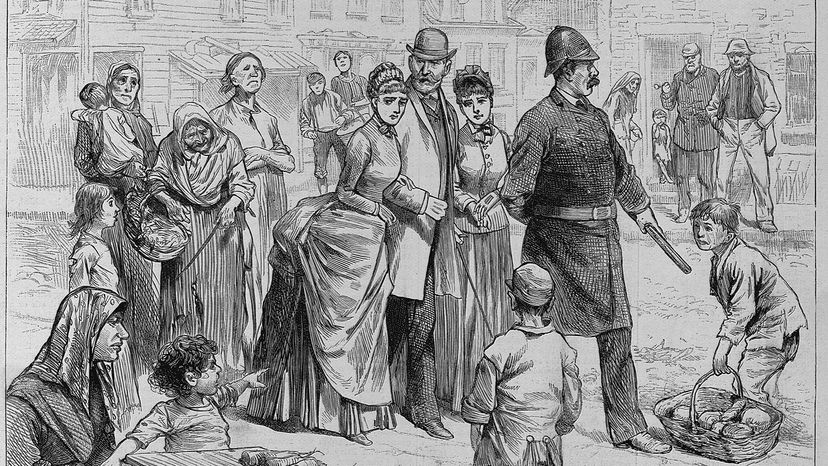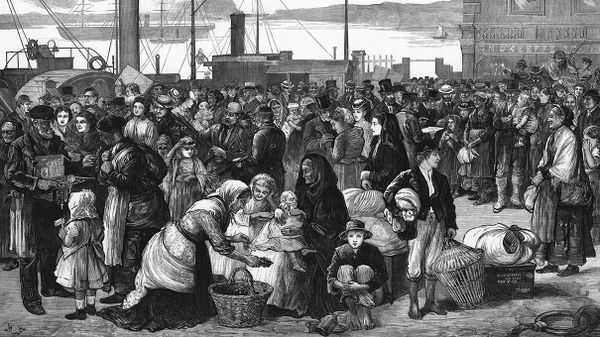
In Martin Scorcese's 2002 movie "Gangs of New York," Leonardo DiCaprio's character Amsterdam Vallon is given a tour of the infamous Five Points slum of 1860s New York City and schooled on the neighborhood's colorfully named gangs of Irish thugs: the Plug Uglies, the Slaughter Houses, the Swamp Angels and the Dead Rabbits.
Seated on a back alley staircase is a woman introduced as Hell-Cat Maggie, shown filing her feline teeth to sharp points. Later, in one of the film's many blood-soaked fight scenes, she pounces on a rival gangster with her razor-sharp brass claws and bites his ear off, preserving it with the rest of her battle souvenirs in a bar-top pickle jar. (Her name later inspired a brand of Irish whiskey.)
Advertisement
Scorcese, who made his name with violent mobster films like "Mean Streets" and "Goodfellas," took his inspiration for "Gangs of New York" from a 1928 book by journalist and novelist Herbert Asbury also called "The Gangs of New York." Scorcese knew Asbury's reputation as a man who never let facts get in the way of entertaining copy, but then again Scorcese didn't set out to make a documentary.
Tyler Anbinder, a historian with George Washington University who specializes in 19th-century immigration and American life, was called in as a consultant on "Gangs of New York" and sat with Scorcese for three hours one day going through every page of the script for inaccuracies.
"He knew all the mistakes in his movie," says Anbinder. "There was only thing I pointed out to him that he didn't seem to know." (That was to do with voting methods in the 1860s.)
Although no shred of evidence exists for a real person called Hell-Cat Maggie, it's hard to resist Asbury's juicy descriptions of her and other mythical Irish "Amazons" in his highly fictionalized account of the meanest 19th-century New York streets.
"The Dead Rabbits, during the early forties, commanded the allegiance of the most noted of the female battlers, an angular vixen known as Hell-Cat Maggie, who fought alongside the gang chieftains in many of the great battles with the Bowery gangs," wrote Asbury.
If Hell-Cat Maggie never existed, then where did Asbury get the idea for this sadistic Irish catwoman? Anbinder thinks that Asbury either made up the character whole cloth or borrowed it from earlier accounts that were loosely "based on true stories." Asbury would have known that such tales were written to titillate 19th-century readers, not report the news.
"If you're Herbert Asbury and you want to write something sensational about the Irish that hasn't been written before, not only do you have a guy biting somebody's ear off, but you make it a woman," says Anbinder. "That's [to show] how debauched the Irish were."
Advertisement


